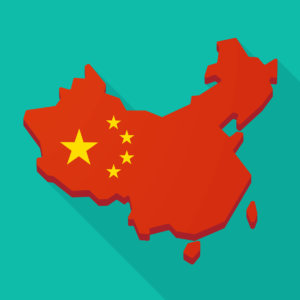Negotiating With Chinese Investors
Chinese companies are increasingly investing in companies overseas. But to reach advantageous agreements with Chinese investors, Western managers need to prepare themselves for differences in negotiating style.
Topics
In 2015, the Chinese economy passed a significant milestone. After years of proactively soliciting overseas investment to build large-scale manufacturing and generate jobs, China saw its outbound investments surpass inbound investments for the first time. As the Chinese economy becomes more advanced, the focus of Chinese overseas investment has entered a new phase, with a change in the target companies of interest. Recognizing this change is important for Western executives seeking to negotiate effectively with direct investors from China.
To negotiate effectively with Chinese investors, corporate managers need to understand three things: (1) the environment in which Chinese companies operate, (2) their interests and priorities, and (3) the strategies Chinese investors use at the negotiating table. In developing our perspective, we studied 15 years of accounts of Chinese outbound investments, as reported by the Financial Times, The Wall Street Journal, The New York Times, Reuters, The Economist, Bloomberg, and the BBC, as well as by leading Chinese media outlets such as Sina, China Daily, Xinhua News Agency, and Caijing. Across hundreds of investments, we focused on 55 highly visible transactions, most with a reported value of at least $100 million. They varied across major industries and countries and involved both state-owned enterprises and private companies.
A Shift in Interests
In recent years, China has been transitioning from rapid growth driven by infrastructure projects and mass manufacturing to more moderate growth based on the consumer economy and sustainable manufacturing. The shift is particularly visible in cases where Chinese companies are investing overseas to acquire the capability to develop new technologies, expertise in supporting sustainable development, well-known brands, or processes to manufacture quality consumer goods.
The food industry provides a vivid example. Increasingly, Chinese consumers with middle or high incomes have taken a keen interest in quality food products from outside China. In addition to their desire for new products, these consumers have a belief that food sourced from developed economies is produced under stricter safety regulations than local food products. In response, Chinese companies are snapping up foreign food companies. Perhaps the best-known investment has been the 2013 acquisition by Shuanghui International Holdings Ltd. (now called WH Group Ltd.) of Smithfield Foods Inc., a large pork processor and hog producer based in Smithfield, Virginia.
The new normal in China can also be seen in Chinese manufacturers’ interest in high-quality production, the efficient use of raw materials, and the responsible treatment of waste. For example, state-owned Beijing Capital Group paid $798 million for a New Zealand-based waste management business unit specializing in environmentally friendly landfill methods and hazardous waste handling — technologies badly needed in China. Transactions like this underline China’s new emphasis on external growth as well as its focus on environmental protection and resource preservation.
Chinese companies understand that even when their product quality is high, most of their brands are not yet established in global markets. Therefore, rather than only promoting their own brands, they are shopping for opportunities to combine Chinese manufacturing capabilities with internationally recognized brands. Consider Guangzhou Pearl River Piano Group Ltd., which has become a model for other Chinese companies seeking to establish themselves globally. In the 1990s, Pearl River was the largest producer of pianos in China, but its brand was unknown in the West, where most pianos are sold. To persuade global customers to consider Pearl River products, the company acquired globally recognized piano makers, buying Ritmüller and a majority stake in Schimmel. It has capitalized on these brands to become the world’s largest producer of pianos, with significant revenues and market share in Europe and North America.
What Western Managers Should Know
So, what should Western managers know to negotiate effectively with Chinese investors? To begin with, Western executives need to prepare themselves for differences in the nature of negotiations. Although Chinese people generally value harmony and prefer to avoid conflict, negotiations with a Chinese counterpart may not seem harmonious by Western standards. Our research shows that Chinese negotiators tend to be more aggressive than their Western counterparts. Specifically, they make tougher opening offers, are more intent on finding ways to gain the upper hand, and make more emotional appeals. In China, social harmony isn’t a priority until the final deal has been reached. During negotiations, Chinese managers don’t consider their counterparts either friends or colleagues. Thus, Western managers should anticipate competition at the negotiating table and respond appropriately. Chinese companies come to the table seeking to achieve their business interests. If they are able to do so, the future relationship is likely to be harmonious.
Western managers should also understand the differences in how Chinese executives build trust and the distinctive way in which they negotiate on multiple issues during a negotiation. Our research has shown that building trust takes time. In contrast to American negotiators, who generally assume that the other party is trustworthy unless proven otherwise, Chinese negotiators make no such assumption. They anticipate that negotiations will proceed without mutual trust, and this leads to a different dynamic in Chinese negotiations than what negotiators from Western cultures are used to. Negotiators who trust each other share information about their interests and priorities. Negotiators who do not trust each other are unwilling to make themselves vulnerable to exploitation by sharing their interests and priorities. Recent research shows that Chinese negotiators tend to make offers incorporating multiple issues, and they infer the counterpart’s interests and priorities from the changes in offers over the course of the negotiation.
Research also suggests that Western negotiators may have more difficulty than their Chinese counterparts in understanding the subtext of interests and priorities embedded in multi-issue offers and don’t realize the synergistic potential that can come with trading off interests and priorities. Our research suggests that the Chinese negotiators are looking for a pattern of concessions from which to draw inferences about interests and priorities. They make concessions on low-priority issues and infer that issues on which the counterpart makes concessions are also low priority. On high-priority issues, however, they hold firm and expect their counterparts to do the same. We found that Chinese negotiators make a lot of multi-issue offers, considering options and making adjustments to arrive at the best deal possible.
Implications for Foreign Companies
Managers of foreign companies contemplating a business relationship with investors from China should anticipate the Chinese approach to negotiation and make strategic adjustments that do not compromise their interests. Recognizing that Chinese negotiators tend to make self-interested multi-issue offers, Western negotiators should be prepared to counter with equally bold offers of their own. We recommend keeping track of multi-issue offers and counteroffers in a matrix, highlighting the various issues of importance. In planning counteroffers, Western negotiators should hold firm on high-priority issues and signal flexibility on low-priority issues. As the multi-issue offers and counteroffers are recorded on the matrix, it will be possible to discover which issues and options are more and less important to the Chinese counterpart. Their general rule is: To the extent possible, concede on low-priority issues and remain firm on high-priority issues. (The overall framework is presented in more detail in Jeanne Brett’s book Negotiating Globally.) The key is to understand each party’s business environment. The interests and priorities of the parties will shape the structure of the negotiations, especially the potential to create synergy and business value.
As the Chinese economy moves further into its new phase, an increasing number of international managers will have opportunities to negotiate with Chinese direct investors. To be successful, Westerners need to understand how Chinese investors operate in the global market. They should recognize that relatively simple adjustments to their own strategies and better use of multi-issue offers can create considerable value in negotiations with their Chinese counterparts.






Comments (2)
Lynn Etheredge
Peter Fasan